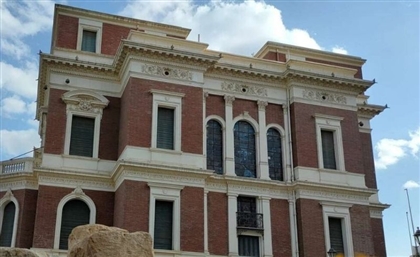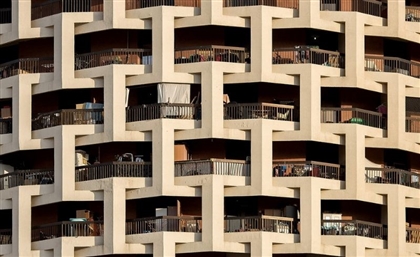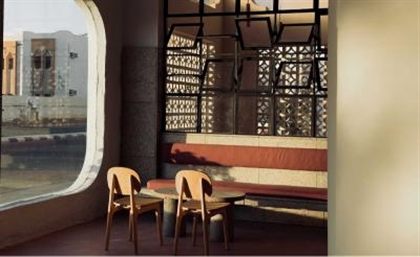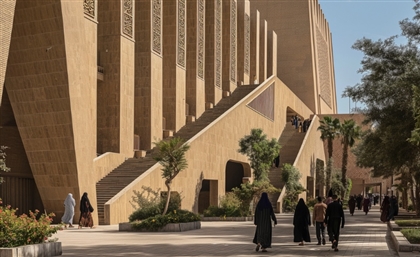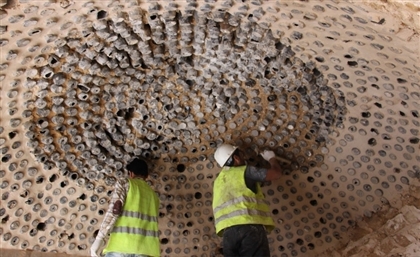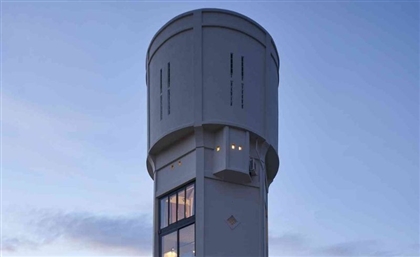Egyptian Vistas: A Fresh Perspective With Visual Artist Nour El Masry
Imagine opening your window in Aswan to view the Great Pyramids of Giza.
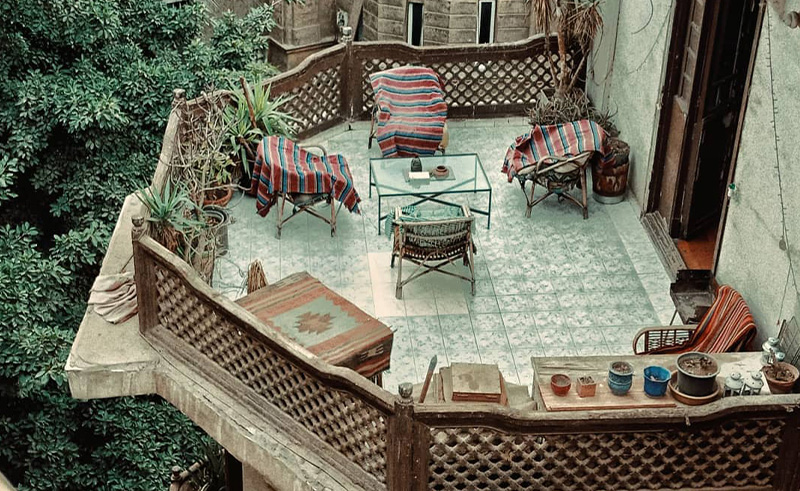
Across Egypt, from Cairo and Alexandria to Luxor and Aswan, film production designer Nour El Masry couldn’t hold back from capturing moments and scenery in Egyptian cities and countryside, blending contexts and views to create breathtaking composite images that feel like a dream. Imagine opening your window in Aswan to view the Great Pyramids of Giza with an indigo sunset?
 “I love capturing fleeting moments in the street and conveying how they feel to people,” El Masry tells SceneHome. Whether it’s while visiting a friend in Garden City or filming in Saqqara, El Masry has made it his mission to create an online archive of Egyptian streets, buildings and interiors.
“I love capturing fleeting moments in the street and conveying how they feel to people,” El Masry tells SceneHome. Whether it’s while visiting a friend in Garden City or filming in Saqqara, El Masry has made it his mission to create an online archive of Egyptian streets, buildings and interiors.
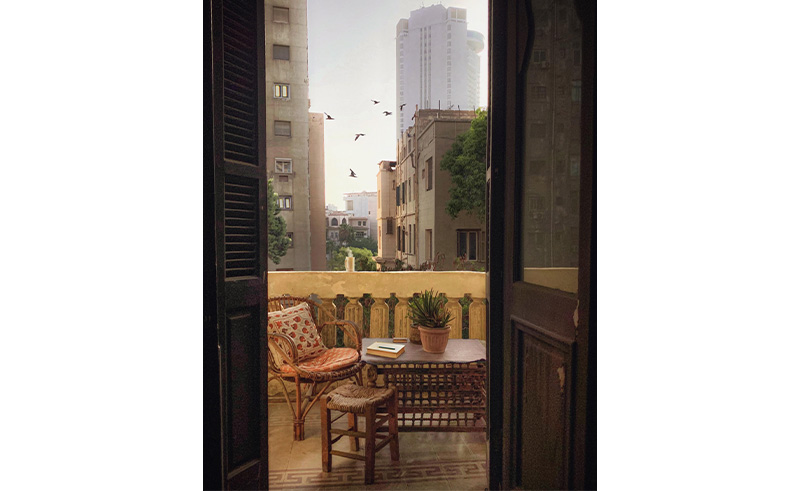 El Masry studied visual arts and cinematography which gave him a good understanding of composition, colour and perspective. “Photography and cinema inspire each other. In the end, my images are a mix of photography, cinema, editing and scenario. My goal wasn’t to be a street photographer but instead a visual storyteller,” he says. “There are a lot of people who aren’t aware of the beautiful neighbourhoods and buildings we have in Egypt.”
El Masry studied visual arts and cinematography which gave him a good understanding of composition, colour and perspective. “Photography and cinema inspire each other. In the end, my images are a mix of photography, cinema, editing and scenario. My goal wasn’t to be a street photographer but instead a visual storyteller,” he says. “There are a lot of people who aren’t aware of the beautiful neighbourhoods and buildings we have in Egypt.”
 At the beginning, El Masry mainly focused on houses and interiors given the nature of his film work. Eventually, he stepped out to the streets and captured buildings and their entrances. “I wanted to showcase how, in the past, people put a lot of attention in entrances. Each had a unique design. This side of Cairo isn’t seen abroad. I want people to see.”
At the beginning, El Masry mainly focused on houses and interiors given the nature of his film work. Eventually, he stepped out to the streets and captured buildings and their entrances. “I wanted to showcase how, in the past, people put a lot of attention in entrances. Each had a unique design. This side of Cairo isn’t seen abroad. I want people to see.”
 During El Masry’s photography walks, he would find himself inside precious spaces. “This was my first time visiting Princess Fatima Palace in Alexandria and I was equally in awe of its details and the lack of attention it received.
During El Masry’s photography walks, he would find himself inside precious spaces. “This was my first time visiting Princess Fatima Palace in Alexandria and I was equally in awe of its details and the lack of attention it received.
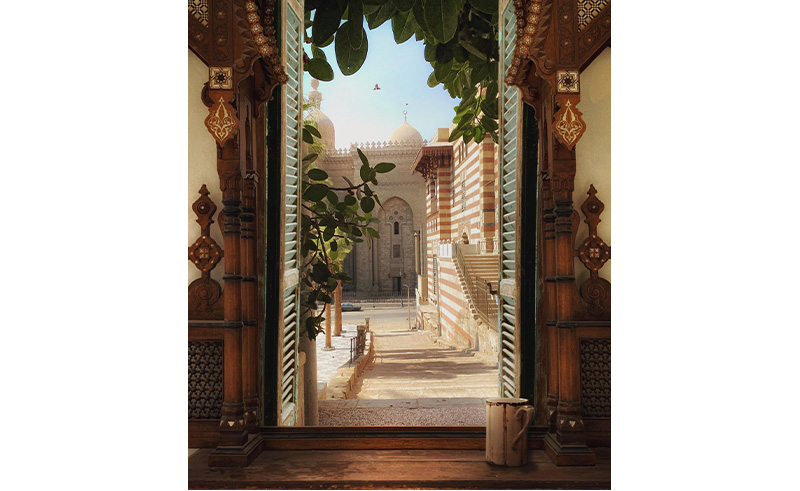 While surveying a house in Zamalek for a shoot, El Masry casually looked out the window before unknowingly coming across a moment of online virality. “I found this scene of an empty terrace and captured it,” he recalls. “The next day I went back to film and all I had in mind was the terrace. I took a couple more photos before realising that the first one, which was completely random and in the moment, was the best.” The photograph ended up resonating with thousands of people, Egyptians and foreigners alike. “It’s calming and you can tell that many generations passed by the space. That’s what we’re missing today, spaces that look like they’ve been used,” he continues. “It was my first viral post and I then realised I can actually give this a go.”
While surveying a house in Zamalek for a shoot, El Masry casually looked out the window before unknowingly coming across a moment of online virality. “I found this scene of an empty terrace and captured it,” he recalls. “The next day I went back to film and all I had in mind was the terrace. I took a couple more photos before realising that the first one, which was completely random and in the moment, was the best.” The photograph ended up resonating with thousands of people, Egyptians and foreigners alike. “It’s calming and you can tell that many generations passed by the space. That’s what we’re missing today, spaces that look like they’ve been used,” he continues. “It was my first viral post and I then realised I can actually give this a go.”
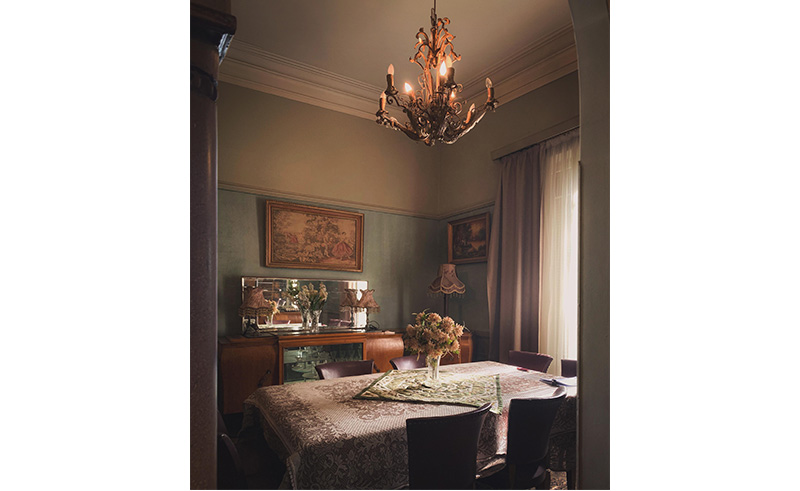 El Masry would explore his form of photography further, placing emphasis on windows, using them to frame scenes whether they’re reality or reverie. “Windows make a photo look and feel relatable. Here, the interior is from inside a mosque featuring woodwork. I was photographing its details for inspiration. Later, when I captured Al Rifai mosque, it felt like a match,” he explains. “Cairo is huge and diverse and I felt like these places, most of which are centuries old, need to be seen more. During my university years, we would visit historic areas to take photos and sketch. I would admire the streets and buildings looking for new perspectives.”
El Masry would explore his form of photography further, placing emphasis on windows, using them to frame scenes whether they’re reality or reverie. “Windows make a photo look and feel relatable. Here, the interior is from inside a mosque featuring woodwork. I was photographing its details for inspiration. Later, when I captured Al Rifai mosque, it felt like a match,” he explains. “Cairo is huge and diverse and I felt like these places, most of which are centuries old, need to be seen more. During my university years, we would visit historic areas to take photos and sketch. I would admire the streets and buildings looking for new perspectives.”
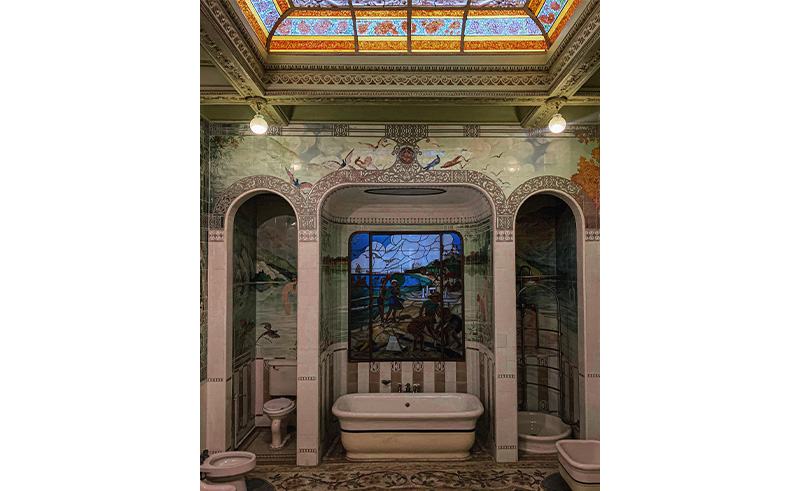 While the shot in Old Cairo could pass as a real full image, there are other examples where El Masry’s composites feature unrelated yet complementary elements. Like a photograph of a window opening up to the pyramids. The interior is from an old and abandoned palace in the El Daher neighbourhood which El masry was using for a shoot. “I was adjusting the interior and then imagined if it was overlooking the pyramids.”
While the shot in Old Cairo could pass as a real full image, there are other examples where El Masry’s composites feature unrelated yet complementary elements. Like a photograph of a window opening up to the pyramids. The interior is from an old and abandoned palace in the El Daher neighbourhood which El masry was using for a shoot. “I was adjusting the interior and then imagined if it was overlooking the pyramids.”
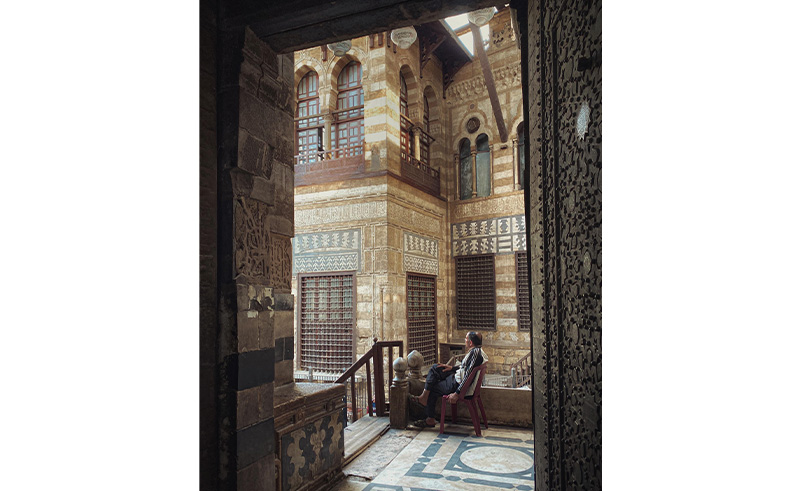 “A lot of people comment that the photos are calmer than usual. Our environment can be full of life but also at times calm and relaxed. I prefer calm because it allows me to see the place more.” Through his lens, El Masry reveals hidden and at times imaginary possibilities of Egypt’s streets, buildings and interiors. The fusion of photography and cinema not only captures fleeting moments but also breathes life into forgotten spaces, resonating with audiences near and far.
“A lot of people comment that the photos are calmer than usual. Our environment can be full of life but also at times calm and relaxed. I prefer calm because it allows me to see the place more.” Through his lens, El Masry reveals hidden and at times imaginary possibilities of Egypt’s streets, buildings and interiors. The fusion of photography and cinema not only captures fleeting moments but also breathes life into forgotten spaces, resonating with audiences near and far.
- Previous Article The Enduring Charm of Jeddah’s Old Town of Al Balad
- Next Article This Swiss-Egyptian Photographer Views Europe Through Mosque Windows




